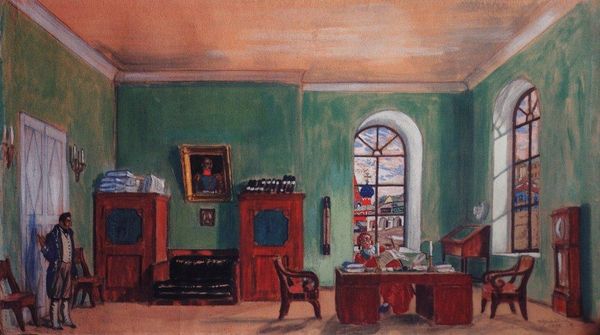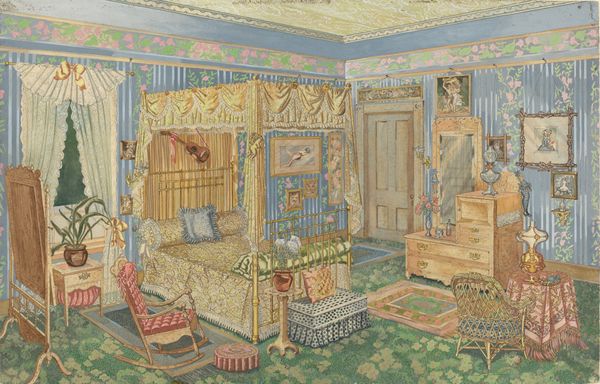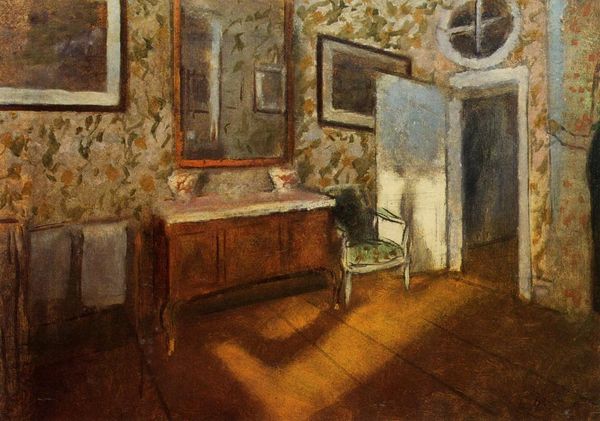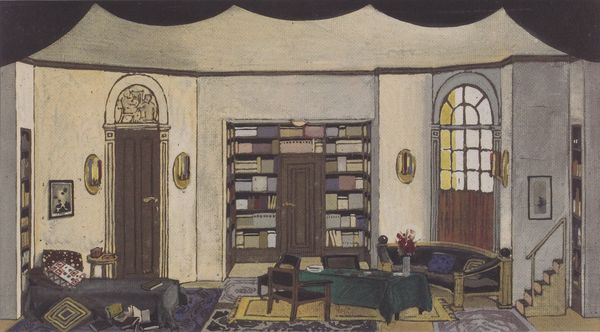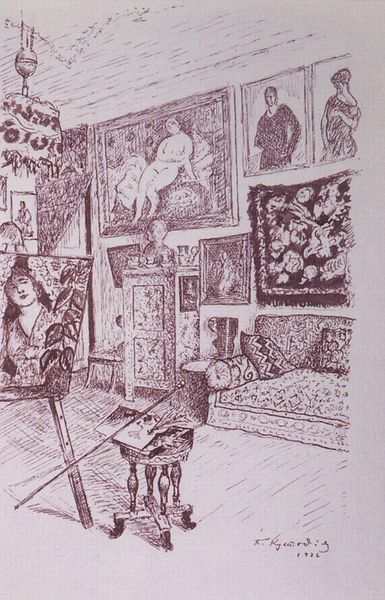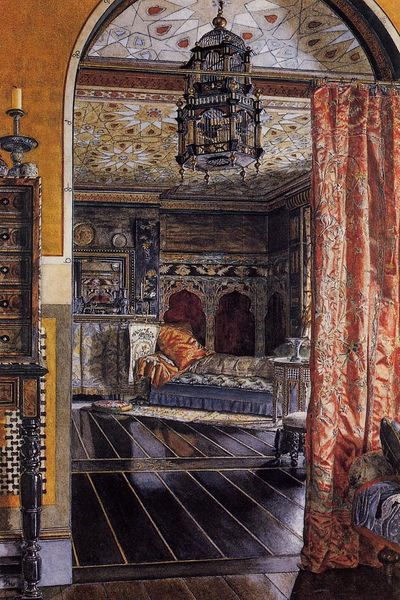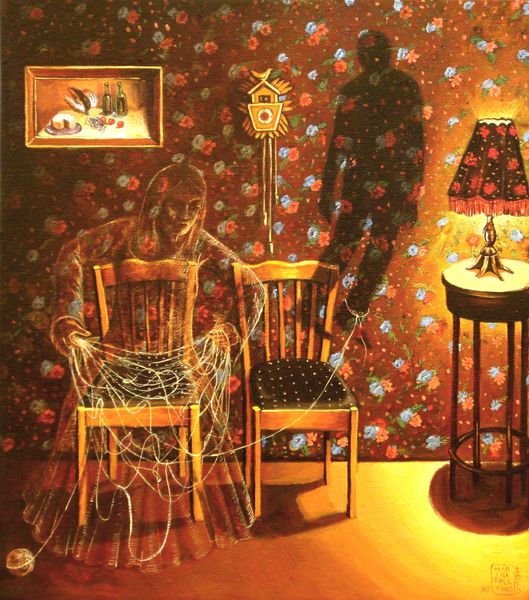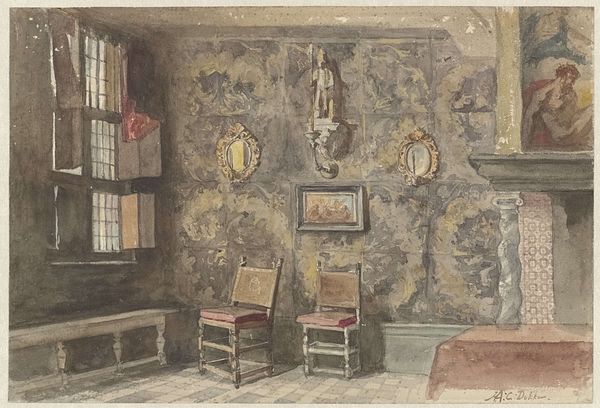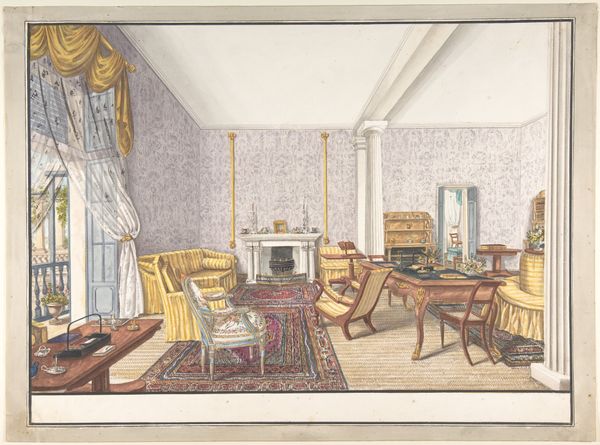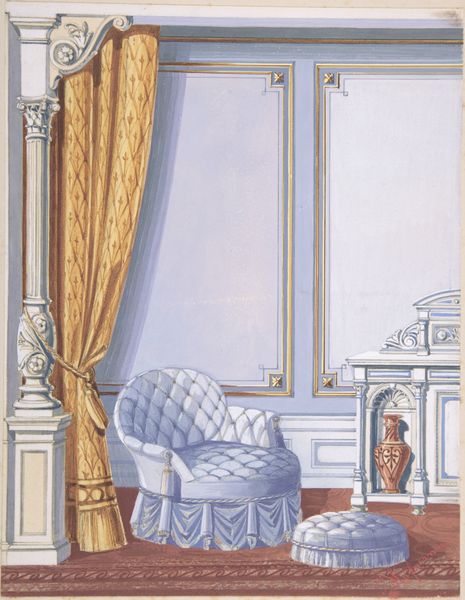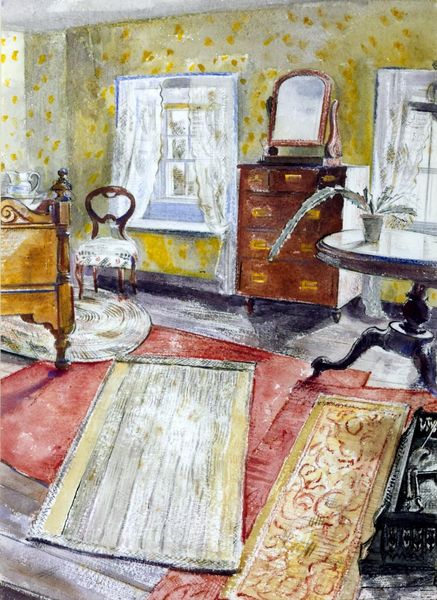
drawing, paper, watercolor
#
drawing
#
cubism
#
landscape
#
paper
#
watercolor
#
studio composition
#
painting painterly
#
modernism
#
watercolor
Copyright: Public domain
Editor: Here we have Kuzma Petrov-Vodkin's "Set Design for staging Diary of Satan (by L. Andreev)" from 1922, done with watercolor and drawing on paper. The prevalence of red and geometrically simple furniture feels both homey and unsettling at the same time. What do you see in this piece? Curator: This set design offers a fascinating glimpse into the social and political anxieties of post-revolutionary Russia. Petrov-Vodkin, while embracing some modernist aesthetics, subtly critiques the bourgeois comfort implied by the setting. Note the color scheme, the almost oppressive use of red, often associated with revolution, but here it feels stagnant, almost suffocating. The Diary of Satan, if you recall, is a satirical work. Does this space strike you as truly 'satanic', or does it embody something more insidious—the quiet complacency that allows evil to flourish? Editor: I hadn't considered that. The redness now reads as stifling. So, this isn't a celebration of the revolution, but perhaps a commentary on its shortcomings? Curator: Precisely. Consider the single window overlooking a dark night. What freedoms does that barred window truly offer? How might this single design choice mirror larger anxieties surrounding personal expression? These early Soviet artworks are not always endorsements of the system; often, they grapple with its inherent contradictions. Editor: The bookcase, with the single statue on top, becomes an idol toppled in its own right. I didn't catch those nuances at first glance! Curator: That’s the power of situating art within its complex socio-political moment. We can unravel subtle acts of resistance embedded within seemingly conventional forms. Editor: I appreciate understanding the broader narratives at play. It makes engaging with art so much more meaningful. Curator: Absolutely, art serves as a mirror reflecting the hopes, fears, and ideologies of a society, inviting us to critically examine our past and present.
Comments
No comments
Be the first to comment and join the conversation on the ultimate creative platform.
